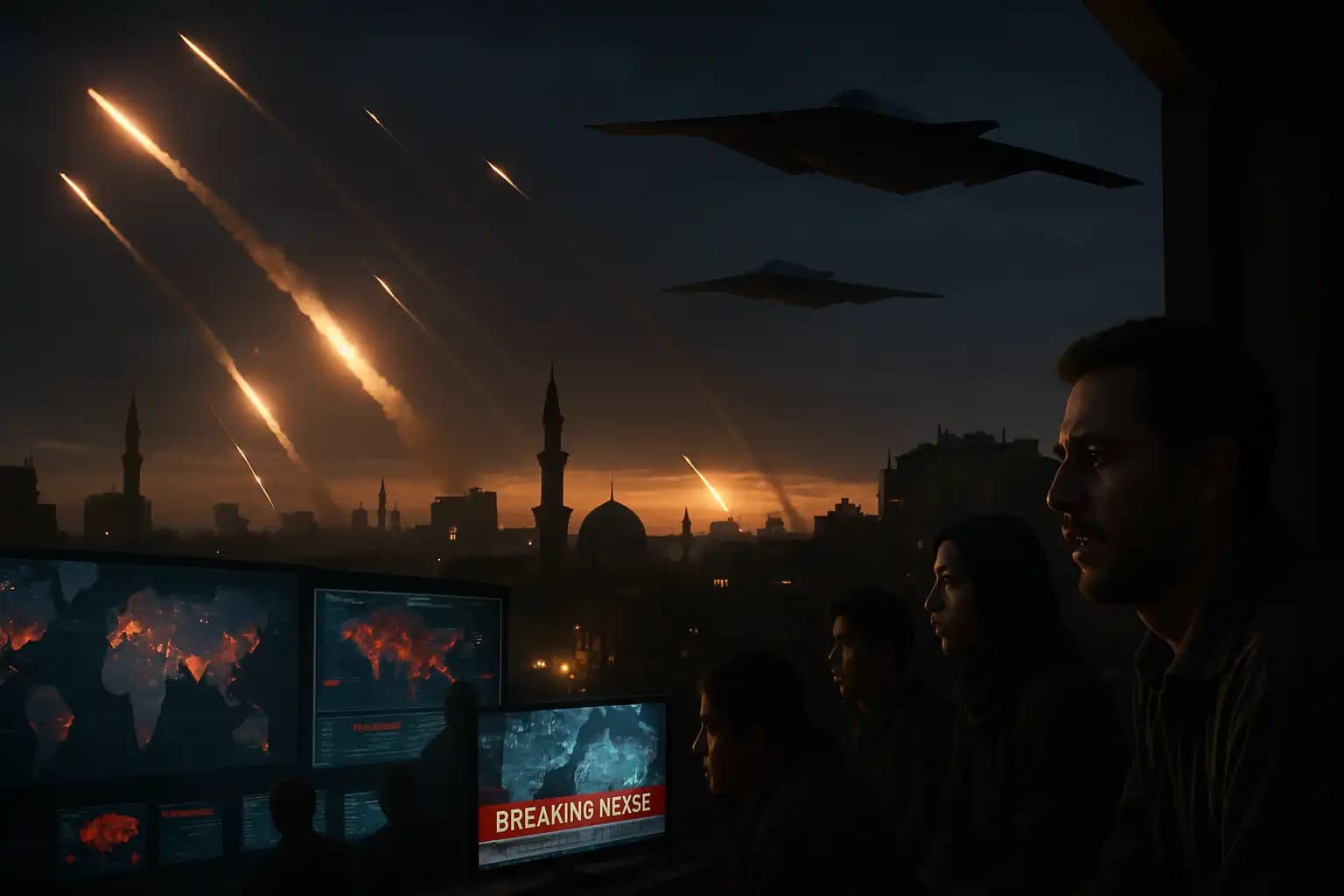Global tensions with Iran have escalated dangerously. In 2024, warnings about a possible “fierce” war seem more plausible than mere doomsday clickbait. The US, Israel, and Iran are in a cycle of escalating military, diplomatic, and economic actions. Recent provocations and counterstrikes force governments, defense contractors, and citizens to reconsider their readiness—psychological, digital, and logistical.
Credible Threats and Escalation Spirals: A Geopolitical Powder Keg
A recent analysis from The Washington Institute argues that only a “credible offensive threat” can deter Iran from further escalation (see the Institute’s escalation assessment). The US and Israel’s strikes in April and October 2024 quickly triggered Iranian retaliation. Events like Israel’s killing of senior Iranian leaders in Damascus sparked powerful missile responses. For years, Tehran relied on proxies for plausible deniability. Yet in 2024, direct confrontations—missile exchanges, cyberattacks, and airstrikes—have emerged openly. This cycle, detailed in global risk intelligence features, reveals the fragility of regional red lines and how swiftly military logic can overshadow diplomacy.
Recent months underscore the value of real-time scenario analysis. Leaked defense planning discussions and accelerating wargames confirm findings in AI conflict forecasts, where the speed and complexity of modern warfare can outpace government response.
Cycle of Retaliation: How and Why Limited War Becomes Total War
Iran’s leadership exhibits a paradox: it shows willingness to fight while calibrating responses to avoid annihilation. A related Washington Institute study explains that Iran’s missile and drone attacks—such as April’s mass launch at Israel—are often “choreographed” to showcase strength while minimizing escalation risk. However, when both sides expect the other to back down, strategic miscalculations become common. As documented in the chronology of the Iran–Israel confrontation, 2024 marked a first: both sides launched major direct attacks after decades of proxy conflict.
In this volatile climate, military planners are reassessing their assumptions. The risk of broader fallout, including a potential regional war involving the US and Gulf states, highlights the necessity for scenario exercises reminiscent of emergency military summits. These exercises inform not only government strategies but also critical infrastructure sectors. Converging crises—from geopolitics to cyber threats and economic shocks—now integrate into security modeling, as addressed in field guides on systemic risk and resilience.
The Pentagon’s Strike Options and the Myth of an Easy War
If conflict escalates to full-scale combat, Pentagon planners will face challenges beyond airstrikes. According to the Institute for the Study of War’s recent operations log and various high-level leaks, US strikes on Iran’s nuclear infrastructure—using B-2 bombers and bunker-buster bombs—illustrate American military capabilities but do not guarantee regime change or decisive victory (see detailed operations background). Experts widely agree that an occupation remains a “nightmare scenario” for the US. Such an effort would require millions of troops and likely ignite Iran’s vast asymmetric network, from missile arsenals to proxy militias. The Modern War Institute concludes that contingency plans now emphasize punishing strikes and local deterrence over regime change.
Thus, readiness encompasses not just tanks and jets; it includes rapid mobilization, information control, and resilience planning—issues covered extensively in discussions on infrastructural risk and unconventional warfare at Unexplained.co.
Why This Crisis Is Different and Why It Matters Now
The 2024–2025 escalations are unique because technology, regional alliances, and retaliation cycles are outpacing diplomatic and public response. Every rocket, drone, and statement risks further miscalculations. For readers and policymakers, the takeaway is not one of paranoia but of prudent vigilance. Understand the new escalation ladder, recognize technology’s limits as a remedy, and learn from recent close calls—many examined in emergency readiness timelines and scenario guides.
With so much energy spent on preparation, remember that readiness extends beyond bunkers and stockpiles. It includes resilient governance, digital literacy, and the integrity of information amid a fast-moving narrative war. As the world nears a critical point, the convergence of open conflict, cyber warfare, and global economic risks has never felt so immediate—or urgent.




